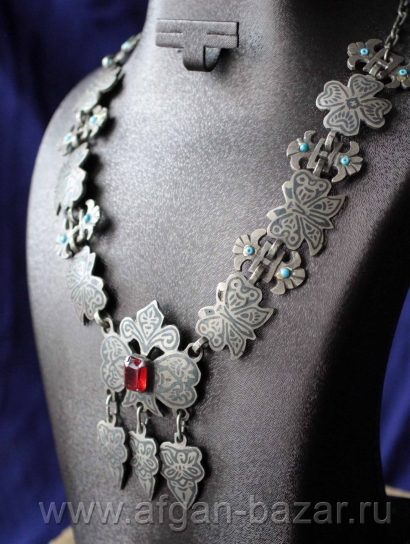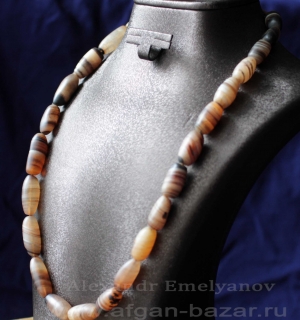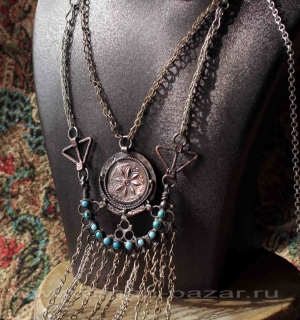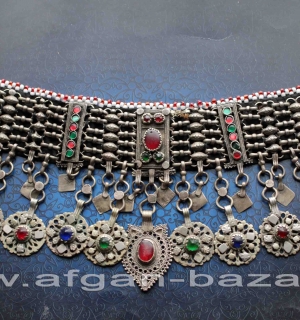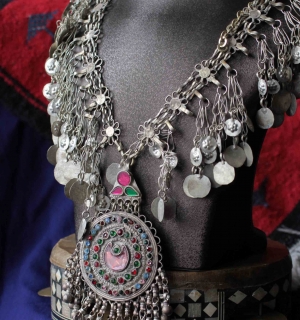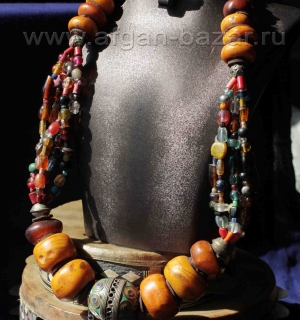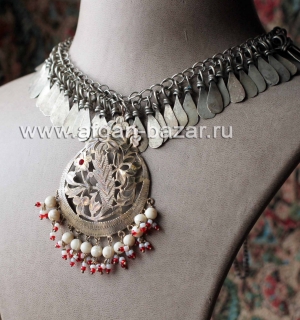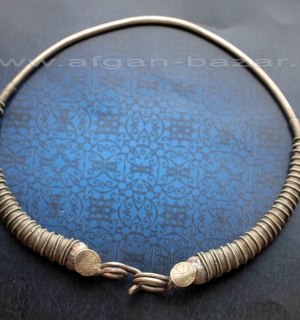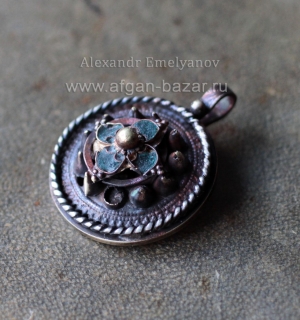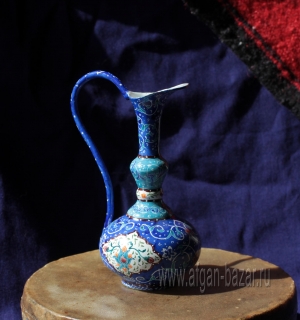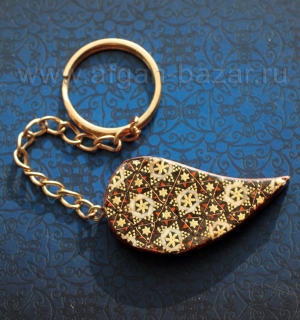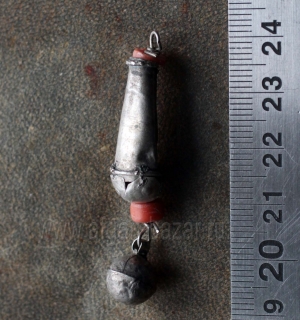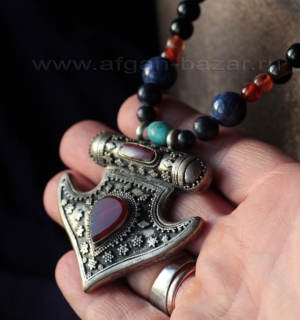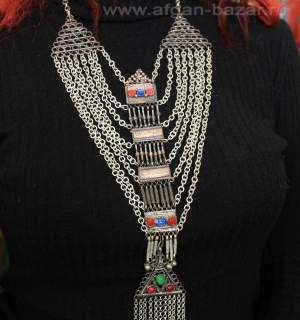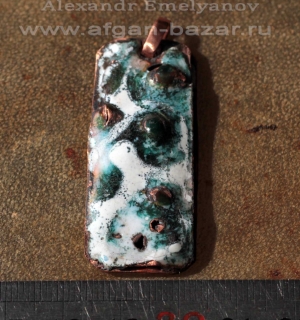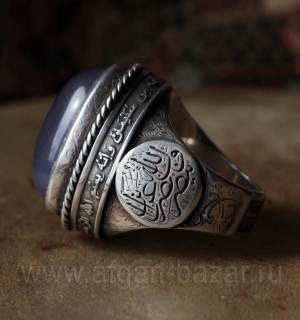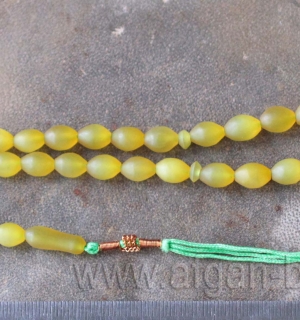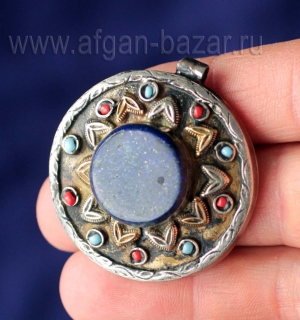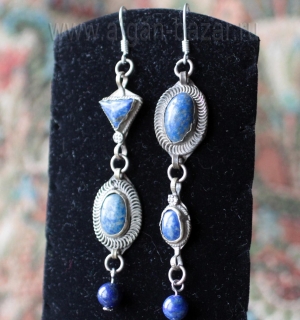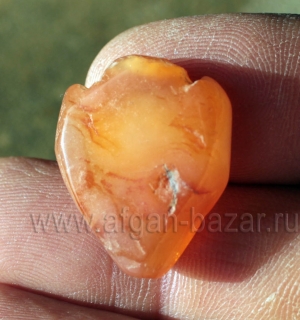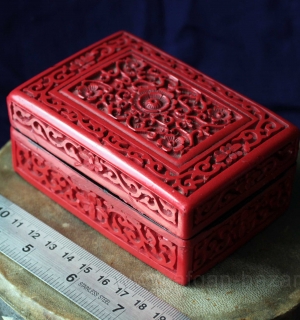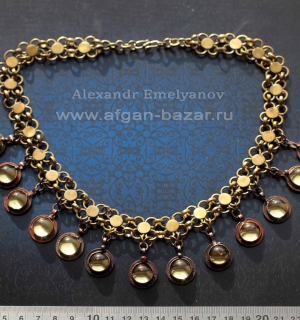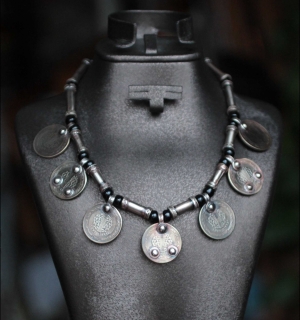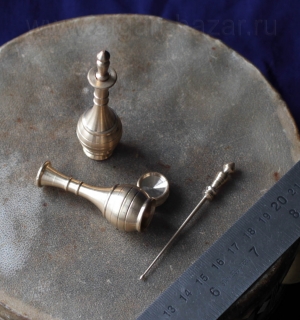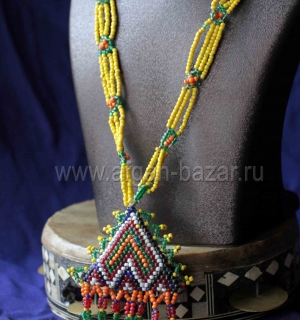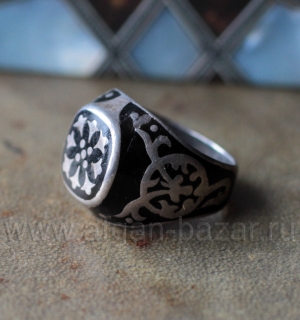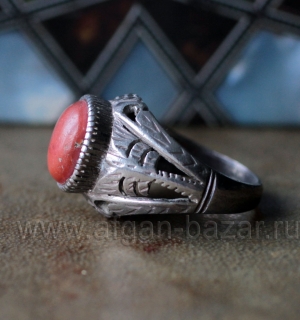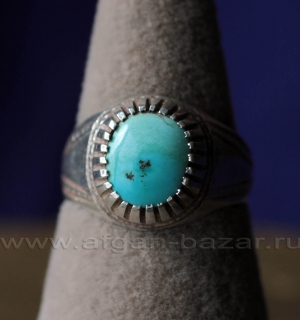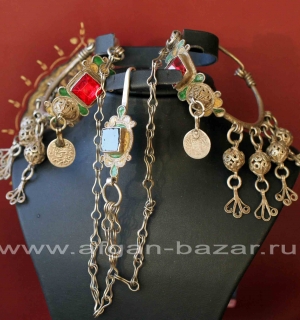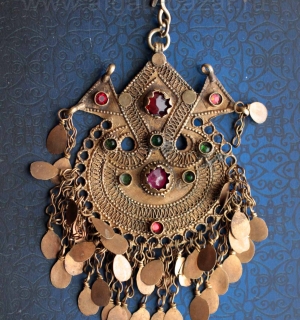Афганское племенное колье с изображениями цветов и бабочек.
Афганистан, народность Хазара, 20 в.
Металл - сплав, традиционно получаемый при переплавке старых украшений и монет, называемый в Афганистане и Пакистане Альпака (Alpaka), или Гиллит (Gillet), состоящий из никеля, цинка, меди и олова в разных соотношениях.
Литье, чернь.
Вставки - стекло, бисер.
Длина колье - 530 мм.
Ширина с подвесками от верхнего до нижнего края по центральному элементу - 70 мм.
Вес - 98 г.
Хазара - народность в центральном Афганистане (Хазараджат) и в западном Пакистане (Кветта). В отличие от большинства своих соседей суннитов, хазарейцы - шииты. Хазара имеют монгольские корни и не имеют отношения к Хазарам, населявшим в средневековье Поволжье.
Для ювелирного искусства хазарейцев, впитавших многие традиции мастерства пуштунов и других народов Средней Азии характерны украшения с большим количеством цепочек и мелких подвесок, изготовленных иногда из латуни, но чаще из сплава, традиционно получаемого при переплавке старых украшений и монет.
В Афганистане и Пакистан этот сплав, называется Альпака (Alpaka), или Гиллит (Gillet). Подобный сплав состоит из никеля, цинка, меди и олова в разных соотношениях с примесью серебра или без него. В Европе он известен под названием "мельхиор".
Украшения хазарейцев в большинстве случаев имеют плоскостное решение, украшенные филигранью и накладными штампованными элементами орнамента в виде розеток, или зооморфных изображений.
Литература:
1. Alfred Janata. Schmuck in Afganistan. / Janata A. - Graz: Akademische Druck – u. Verlagsanstalt, 1981. - s. 74-75.
2. Wolf Dieter Siewert. Jewellery from the Orient. Treasures from the Bir Collection. – Stuttgart: Arnoldshe 2009 – p. 178, 187.
3. Karolina Krzywicka. Ethnic Jewellery of Afghanistan. From theAsia and Pacific Museum in Warsaw - Warzawa: 2012. - p. 73-76.
Другие товары из этой категории
-
7 500 ₽
-
6 500 ₽
-
17 950 ₽
-
7 250 ₽
-
6 250 ₽
-
5 200 ₽
-
7 250 ₽
-
8 500 ₽

